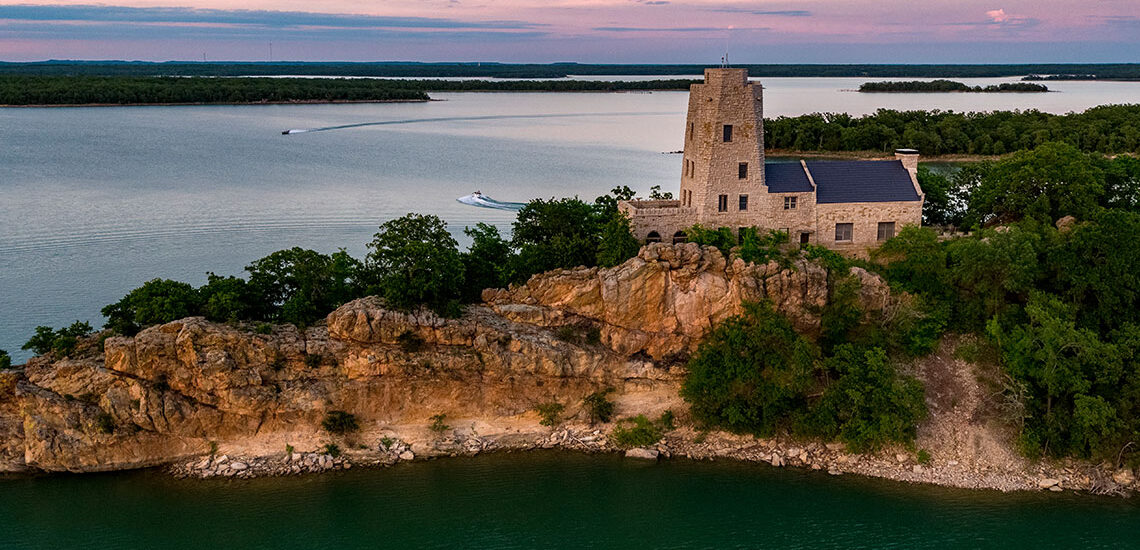Tucker Tower, a striking limestone structure, stands proudly on a cliff overlooking the serene waters of Lake Murray in Ardmore, Oklahoma. This iconic landmark is steeped in history, embodying the spirit of the era during which it was constructed. Built in the 1930s by the Works Progress Administration (WPA), Tucker Tower was initially intended to serve as a retreat for Oklahoma governors, a testament to the ambitious projects of the New Deal aimed at providing jobs during the Great Depression. The tower’s construction utilized locally sourced bluish-gray limestone, giving it a timeless, castle-like appearance.
The history of Tucker Tower and its surrounding area dates back even further. The land once served as a home to the Kichai Tribe of the Wichita Indians. As the region transitioned into Indian Territory, it became a refuge for outlaws and bandits, adding a layer of folklore to the site. Legends speak of a cave at the tower’s base, used by both Native Americans and outlaws for shelter.
The creation of Lake Murray and the state park was significantly influenced by William H. Murray, affectionately known as ‘Alfalfa Bill.’ As Governor of Oklahoma from 1931 to 1935, Murray was instrumental in the development of the lake and park, envisioning them as sources of employment and recreation for Oklahomans during the tough economic times of the 1930s.
One of the most fascinating stories to emerge from Tucker Tower is the discovery of the Lake Murray meteorite during its construction. Workers uncovered a massive 500-pound meteorite, which turned out to be one of the largest of its kind in the world. This discovery sparked scientific interest and added a cosmic dimension to the area’s allure.
Over the years, Tucker Tower has evolved from its initial purpose to become a vibrant museum, offering educational exhibits on the local ecosystem and the area’s rich history. Visitors can explore the tower, learning about its construction and the stories of the people who shaped it. The panoramic views from the observation deck provide a breathtaking perspective of Lake Murray, inviting visitors to reflect on both the natural beauty and historical significance of this remarkable site.




